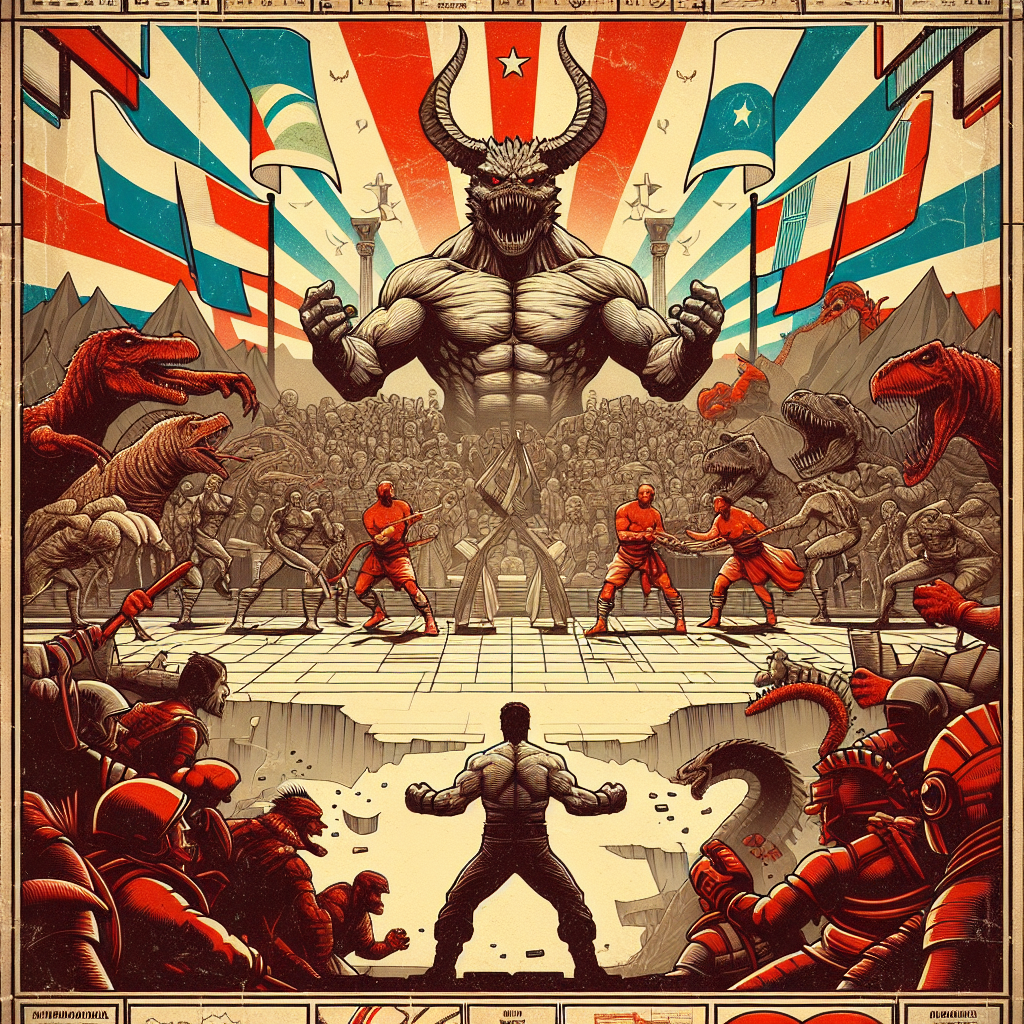If you think all wrestling shows are just beefy dudes slamming each other repeatedly, then you haven't experienced the whirlwind that is Ultima Lucha 1. This event was the season finale for Lucha Underground's inaugural season and took place on July 29 and August 5, 2015, at the Boyle Heights' temple in Los Angeles, California. Ultima Lucha 1 was a meticulously crafted spectacle that stretched over two episodes. It was filled with drama, physical prowess, and storylines that went beyond the ring, thus capturing the hearts of many fans who gathered to watch this wrestling extravaganza.
Lucha Underground brought its unique style to the American wrestling scene by blending Mexican lucha libre traditions with modern wrestling entertainment. It wasn't just a spectacle of strength and acrobatics; it was a narrative in motion. With its cinematic storytelling, each match at Ultima Lucha 1 was more than just a fight. It was the culmination of personal vendettas, betrayals, and alliances. This duality brought something fresh to wrestling, marrying sports and soap opera in a way that intrigued viewers who might not have been previously interested.
A key match that fans still talk about was the battle between Vampiro and Pentagon Jr. It was gruesome, yet utterly compelling. The storyline evolved Pentagon Jr. from a mere wrestler to a disciple with a master to please. This match wasn't just about physical domination; it was a display of obsession and loyalty. Vampiro's mysterious aura clashed beautifully with Pentagon’s deranged fervor, leading to a violent dance that ended in bloody victory. It wasn't just the brutality of the match that made it memorable, but how it highlighted the internal struggles of the characters, blurring the lines between hero and villain.
The event wasn't just about the likes of Vampiro and Pentagon Jr.; it was a platform for other captivating stories too. The quest for the Lucha Underground Championship title featured Prince Puma defending his title against Mil Muertes. This wasn't just a contest of athleticism, though both competitors were at the peak of their physical capabilities. The tension was palpable, knowing it symbolized a battle between light and darkness. Muertes, with his seemingly unstoppable power and brooding demeanor, was a formidable opponent, while Puma represented resilience and hope. The match delivered on all fronts, leaving fans questioning their picks till the very end.
The authenticity and passion that Lucha Libre brought to the forefront were a fresh change of pace in an often stalemated wrestling industry. However, it's undeniable that the violence quotient in events like Ultima Lucha 1 was high. For those who enjoy wrestling for its choreography and athleticism, the blood and brutality can be hard to stomach. Criticisms about promoting excessive violence were not unfounded, especially in an era where younger and impressionable viewers are a significant part of the audience. Opponents of such content worry it normalizes aggressive behavior, and these are concerns worth considering.
However, for every debate on violence, there's equally as fierce an argument about creative freedom and realism in storytelling. The hard-hitting nature of shows like Ultima Lucha 1 appeals to wrestling purists who crave authenticity in an entertainment zone that can sometimes feel watered down. As with most forms of entertainment, regulating content for age appropriateness, context, and delivery is crucial. Lucha Underground, while testing boundaries, operated within a fictional universe, offering context for the stories it told.
What also set the event apart was how it sublimated individualism and culture, giving space to minority narratives that are often ignored. With its roots in Mexican culture and mythology, Lucha Underground celebrated diversity, offering representation that expands wrestling's reach beyond traditional demographics. For Gen Z, who value inclusivity and representation, this was a welcome change.
Ultima Lucha 1 wasn't just about the glitterati of wrestling. It signified that wrestling can be about more than physical domination. It was a reminder that these events can overlap art and athleticism, truth and fiction. Whether you loved it or hated it, Ultima Lucha 1 left an imprint on the world of wrestling. For many, it was a spectacle of raw energy that delivered stories capable of being felt, even beyond the limitations of the screen. It embodied a world where storytelling met raw human emotion—awkward, uncomfortable, yet weirdly beautiful.

